How and Why to Caponize Backyard Chickens and How Caponizing is Done
When you are homesteading and raising chickens you may want to caponize your chickens. To caponize a chicken means to neuter it. Neutering is done to make chickens fatter and more tender when they are slaughtered.
What is a Capon?
A capon is a male bird that has had its testicles removed. These organs are located just under the backbone, on either side, in line with the last 2 ribs.What is Caponizing and Why do It?
Caponizing chickens is, in short, the surgical operation necessary for removing the testicles and neutering the chickens.
Yes, you have to surgically remove the testicles. When this is done the bird can grow longer, gets larger and can also be used as a broody as their hormones are now that of a hen's. If you raise chicks in an incubator these capons make wonderful surrogate mothers once they hatch. However, the main reason for caponizing is because by doing so you get a beautiful eating bird.
Which Chicken Breeds can be Used as a Capon?
Any breed can be used as a capon. The traditional breeds are Orpingtons, Rocks and other duel purpose breeds.
I have found that if you have discovered Silkie meat than this is one way to get a bit of meat on your Silkie.
Silkies have black skin and
black organs. The chemical that creates the black color also contains
more vitamins and antioxidants than any other breeds
of chickens. Caponized Silkies are becoming quite
popular on the
health market. If you have Bantam
chickens caponzing will also plump up those little
birds a bit.
What is the Best Age to Caponize Chickens?
The best age to caponize backyard chickens is from 6 weeks to 3 months.
How to Caponize your Backyard Chickens
An old method of caponizing chickens involves a straw with a horse hair running through it in a loop to lasso the testicle. Other methods of caponizing involve cutting a "V" into your pinkie fingernail and hooking them that way.
You must be careful of anything sharp as there is a main artery that runs down the spine and if you cut that, you have lost your bird. I recommend practicing on a cockerel you have either recently killed or which has died. As a dead bird is a safe, first-practice bird, you certainly can't hurt it any.
You will need to start the caponizing process by withholding food and water for about 24 hours. This keeps the swelling down and allows you to see what you are doing better as the gut and intestine are not full. You will also need to restrain the bird. I like the bow method myself. I have seen many techniques, that range from tying a string from the wings to one brick and the legs to another while the bird is lying on a table, the bricks are hanging off the edge. I have seen nails posted into a table and the strings tied to them.
I like the bow method of caponzing as I can hold it anyway I want to and keep the tension where it is not painful to the bird, but tight enough that I can work.
The bow is just that, a bow. You can
use
a green piece of willow and 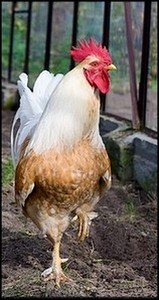 loop
a string from around the base of both
wings to the top part and tie the legs to the bottom
part. Adjust the
tension accordingly.
loop
a string from around the base of both
wings to the top part and tie the legs to the bottom
part. Adjust the
tension accordingly.
Locate the second posterior rib, (last 2 ribs) and make an incision between them. Note the skin is stretched so when you release the bird the skin will cover the opening forgoing the need for stitches. When you make your incision you will have to spread the ribs carefully to see the first testicle.
Books will tell you to remove the closest testicle first, however I advise you to remove the one furthest away first. The reason is some bleed, some don't but if they do bleed you can't find the second testicle.
In this manner the removal of the closest one will not bleed onto your other one and you have a better chance of finding it and not damaging the artery along the spine looking for it. You will not have to cut these loose. They will simply come loose.
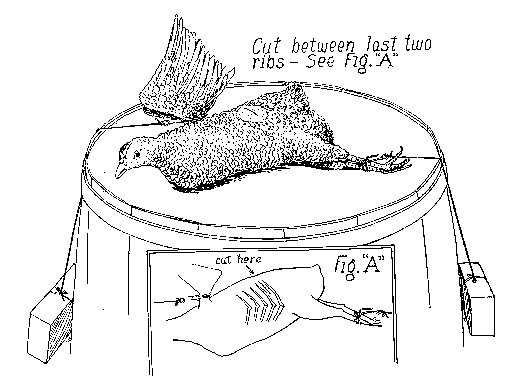
Don't feel bad if you loose a few chickens when you first start out. It will happen. You won't loose a lot if you practiced on a freshly dispatched bird, however you will loose a few until you get the hang of it.
After you get the hang of it you will be caponizing quickly and efficiently. I wish I had photos to show you however my camera was lost over the winter and I'm planning on finding it rather then buying a new one. I'm stubborn that way.
Here is a link to a PDF online book that isn't complete but will give some photos and instructions.
http://www.afn.org/~poultry/images/capon/capon2.pdf
By Gypsy, our resident homestead blogger from One Sky Ranch
Gypsy's Wanderings Homestead Blog
Did you find this page helpful?
Sharing is a way of saying, "Thanks!"
Follow Us and Keep Up to Date
Other Chicken Resources you May be Interested in
Go
from Caponize Chickens back to Gypsy's
Wanderings Homesteading Blog
Go
to How to Raise Chickens
Go
to Feeding Chickens
Go
to
Chicken Breeds
Go
to Bantam Chickens
Go
to Cleaning Chicken Pens with Fire
Go
to Chicken Coop Plans
Go
to Chicken House Plans
Go
to Backyard Chickens
Go
to FAQ Raising Chickens
Go
to Butchering Chickens
Go
to Coccidiosis in Chickens
Go to Natural Remedies for Sick Chickens
Go
to
Self-Sufficient Living
Go
to Chicken
Recipes
Go
to Farm Animals
You can Add your Own Comments and Pages on Caponizing Backyard Chickens!
We have lots of pages where you can contribute to throughout this website. We love hearing from our readers, and hope you will be one of those we hear from too. Look around our homesteading website. If you have any comments or questions, please feel free to contact us.
Leave a Comment
Do you have anything that you would like to add after reading this page? We would love to hear your thoughts. If you can add additional information to what has been written here you will be adding value to the website! No need to have any special skills - just type and submit. We will do the rest!
Other Comments
Click below to see comments from other visitors to this page...
Caponizing Kit doesn't work 




I recently purchased a caponizing kit from NASCO Co. I find the spreader doesn't work properly, as the ribs slip off so the job can´t be done.
Any suggestions …
My Dad caponized a 1000 a day 




We had a family business for 25 years caponizing chickens.
Rhodes Started Capons. One person put the chick on a board so that it was stretched out, …
Grandpa's Way of Caponizing 




When I was very young I watched grandpa do this but he used a crochet needle. However, I don't think he removed anything. I think he just cut some tubes. …
capon chicks for sale 




Does anyone know of anyone selling capon chicks?
I live in the northwest and they do not know what a capon is or how it differs.
Please let me …
Bow picture for caponizing? 




Will you please post a picture of the bow on the bird? It's a little hard for me to figure out how the two ends of the bow loops hod the wings and feet... …
When to Caponize and Cruelty Issues Regarding Caponizing. 




The birds are easiest and best caponized at 10 days to 2wks. Less traumatic and less mortality. To answer the critics regarding pain.... the internal …
help to caponize 



I have caponized several hundred chickens & have lost only 2 0r 3 However I had an electric clipper & there was no bleeding (it couterized as it cliped …
Nice, chicken or not? Not rated yet
Will caponizing a male chicken keep them from becoming a meal or chasing my children? We recently sent a beautiful rooster for slaughter because my 3 kids …
Don't miss out on our latest news and articles. Sign up for our free monthly e-zine!
OTHER SECTIONS OF INTEREST
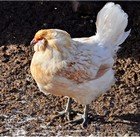 Sick
Chickens
Sick
Chickens 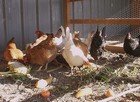
Feeding Chickens
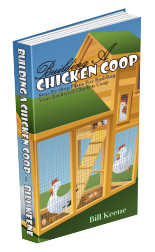
Click Here

Click Here
Make an Incubator

Click Here

Click Here
Raising Chickens Bonanza

Click Here




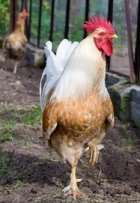
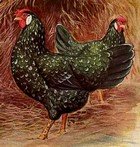
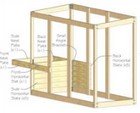
New! Comments
Do you have something of value to add? Leave me a comment in the box below.